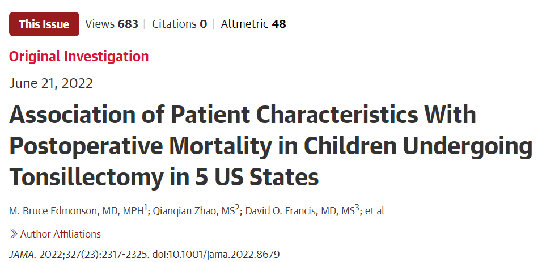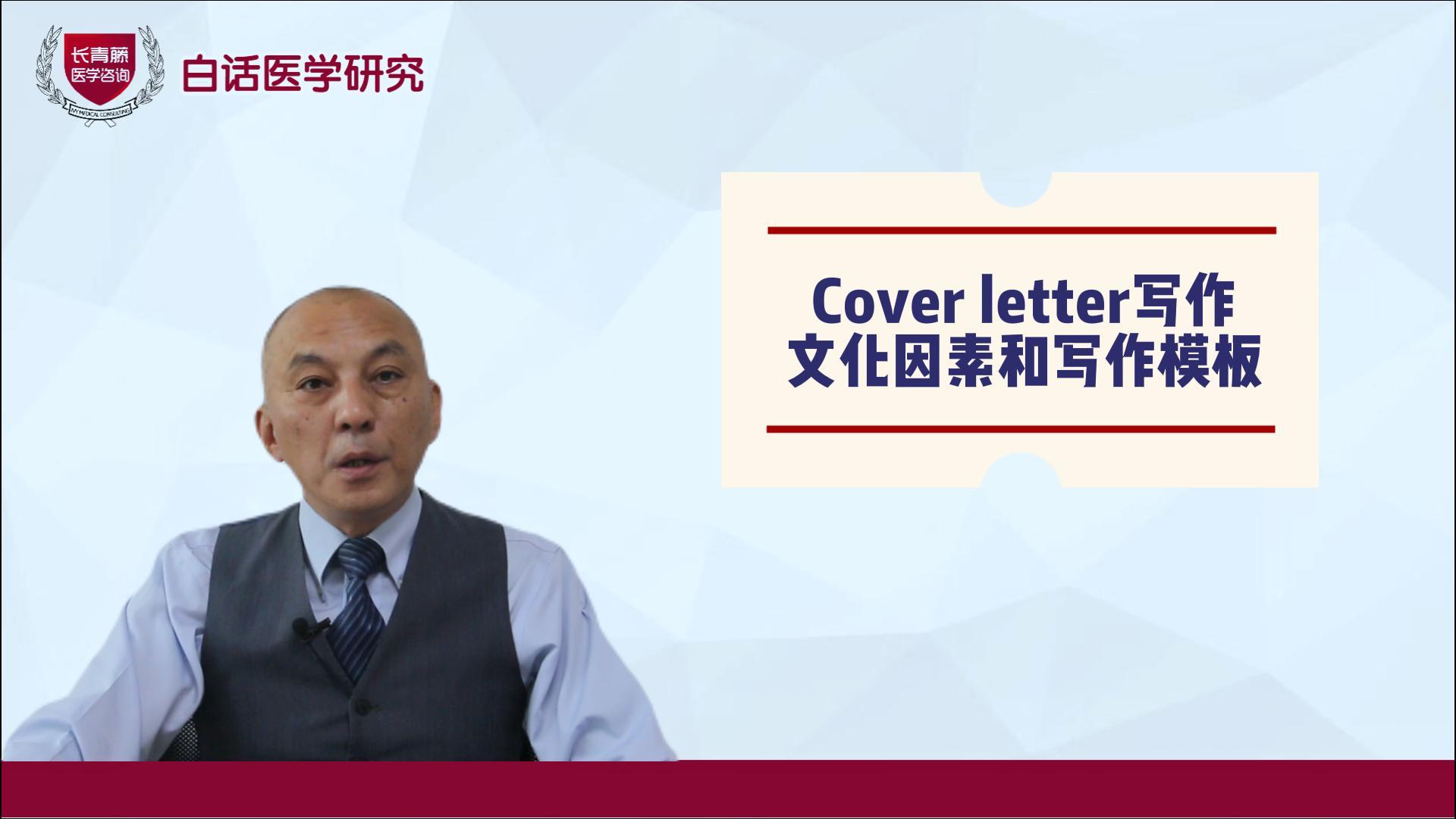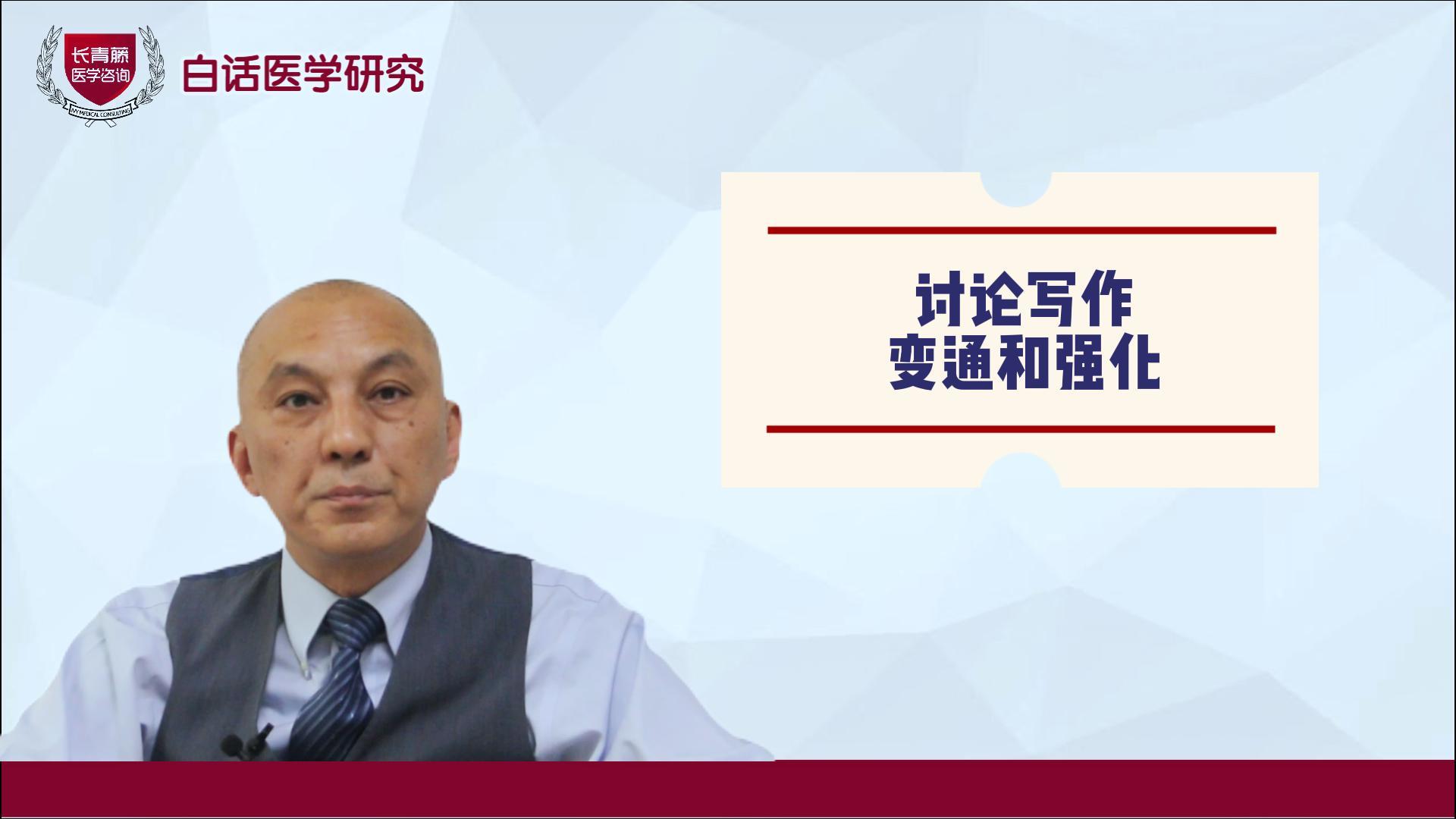2022-06-29


Edmonson MB et al. JAMA. 2022 Jun 21;327(23):2317-2325.
流行病学数据显示,接受扁桃体切除术的儿童术后死亡率缺少研究数据。对于并发症风险增加的儿童,包括幼儿(3岁)和患有睡眠呼吸障碍或复杂慢性疾病的儿童,没有单独提供死亡率。本研究旨在评估美国儿童扁桃体切除术后的术后死亡率,包括总体死亡率和并发症的危险因素。
该项研究共纳入504262例儿童,共505 182例患者接受扁桃体切除术,其中幼儿为10.1%,睡眠呼吸障碍患者为28.9%,复杂慢性疾病患者为2.8%。有36例相关的术后死亡(IQR)为4.5天,大多数(53%)发生在手术出院后。未调整死亡率7.04例/百万(95% CI, 4.97-9.98)。患有复杂慢性疾病的儿童死亡率(16例死亡/14 299例手术)显著高于无这些疾病的儿童(差异率为113.55例 95% CI,51.45-175.64]。患有复杂慢性疾病的儿童占扁桃体切除术的2.8%,占术后死亡44%。
研究数据结果证实,在接受扁桃体切除术的儿童中,术后死亡率为10万分之7,在患有复杂慢性疾病的儿童中为10万分之117。这些发现可以为儿科扁桃体切除术提供决策依据。
Abstract
Importance: The rate of postoperative death in children undergoing tonsillectomy is uncertain. Mortality rates are not separately available for children at increased risk of complications, including young children (aged <3 y) and those with sleep-disordered breathing or complex chronic conditions.
Objective: To estimate postoperative mortality following tonsillectomy in US children, both overall and in relation to recognized risk factors for complications.
Design, setting, and participants: Retrospective cohort study based on longitudinal analysis of linked records in state ambulatory surgery, inpatient, and emergency department discharge data sets distributed by the Healthcare Cost and Utilization Project for 5 states covering 2005 to 2017. Participants included 504 262 persons younger than 21 years for whom discharge records were available to link outpatient or inpatient tonsillectomy with at least 90 days of follow-up.
Exposures: Tonsillectomy with or without adenoidectomy.
Main outcome and measures: Postoperative death within 30 days or during a surgical stay lasting more than 30 days. Modified Poisson regression with sample weighting was used to estimate postoperative mortality per 100 000 operations, both overall and in relation to age group, sleep-disordered breathing, and complex chronic conditions.
Results: The 504 262 children in the cohort underwent a total of 505 182 tonsillectomies (median [IQR] patient age, 7 [4-12] years; 50.6% females), of which 10.1% were performed in young children, 28.9% in those with sleep-disordered breathing, and 2.8% in those with complex chronic conditions. There were 36 linked postoperative deaths, which occurred a median (IQR) of 4.5 (2-20.5) days after surgical admission, and most of which (19/36 [53%]) occurred after surgical discharge. The unadjusted mortality rate was 7.04 (95% CI, 4.97-9.98) deaths per 100 000 operations. In multivariable models, neither age younger than 3 years nor sleep-disordered breathing was significantly associated with mortality, but children with complex chronic conditions had significantly higher mortality (16 deaths/14 299 operations) than children without these conditions (20 deaths/490 883 operations) (117.22 vs 3.87 deaths per 100 000 operations; adjusted rate difference, 113.55 [95% CI, 51.45-175.64] deaths per 100 000 operations; adjusted rate ratio, 29.39 [95% CI, 13.37-64.62]). Children with complex chronic conditions accounted for 2.8% of tonsillectomies but 44% of postoperative deaths. Most deaths associated with complex chronic conditions occurred in children with neurologic/neuromuscular or congenital/genetic disorders.
Conclusions and relevance: Among children undergoing tonsillectomy, the rate of postoperative death was 7 per 100 000 operations overall and 117 per 100 000 operations among children with complex chronic conditions. These findings may inform decision-making for pediatric tonsillectomy.
百度浏览 来源 : 医微客
版权声明:本网站所有注明来源“医微客”的文字、图片和音视频资料,版权均属于医微客所有,非经授权,任何媒体、网站或个人不得转载,授权转载时须注明来源:”医微客”。本网所有转载文章系出于传递更多信息之目的,且明确注明来源和作者,转载仅作观点分享,版权归原作者所有。不希望被转载的媒体或个人可与我们联系,我们将立即进行删除处理。 本站拥有对此声明的最终解释权。




发表评论
注册或登后即可发表评论
登录注册
全部评论(0)